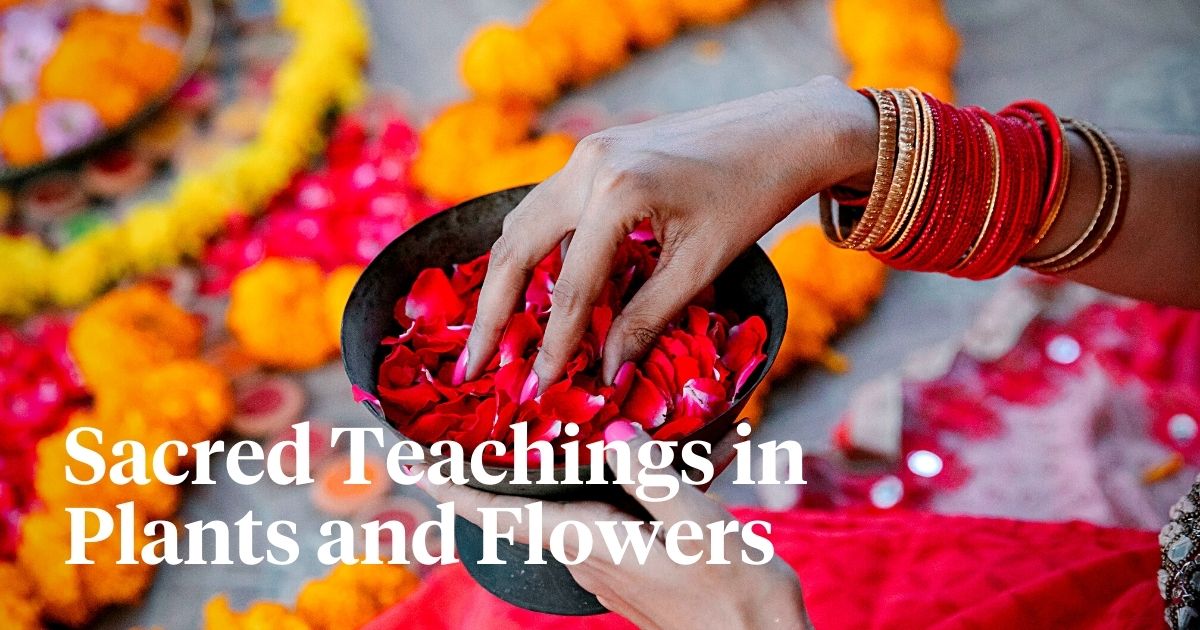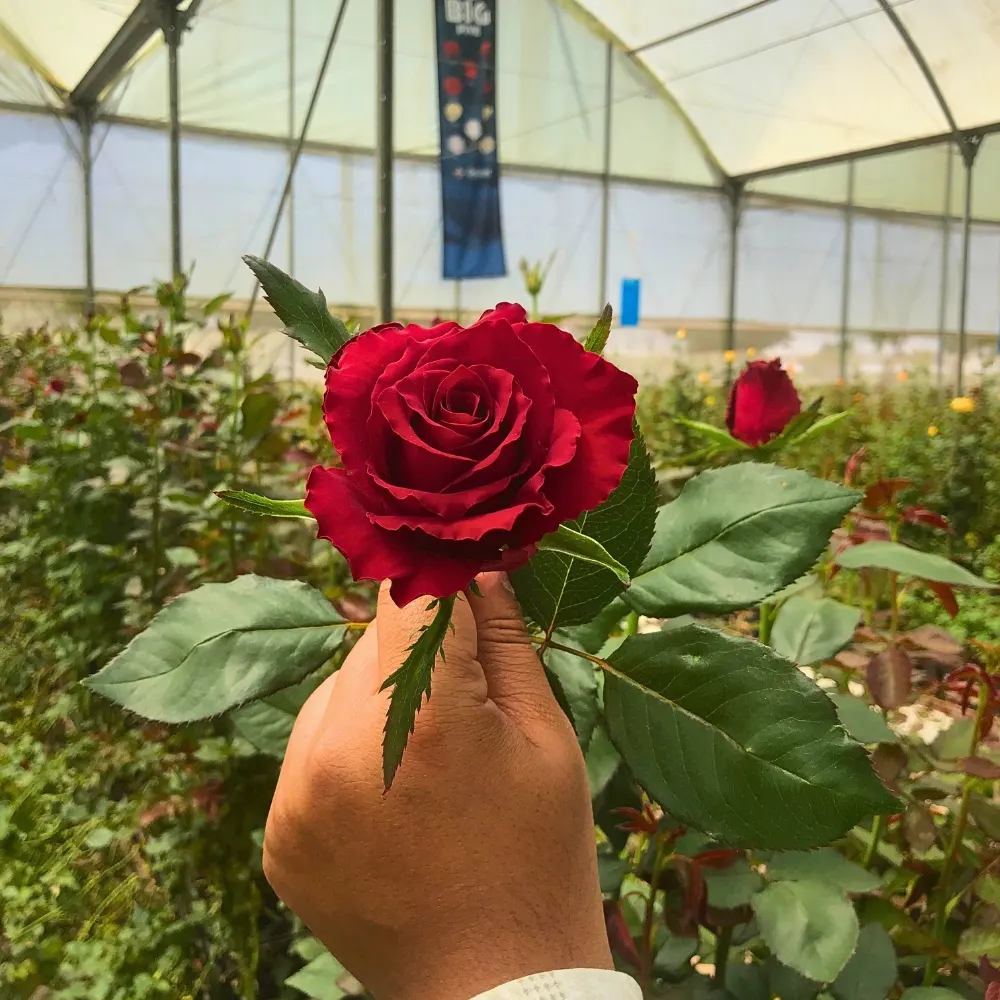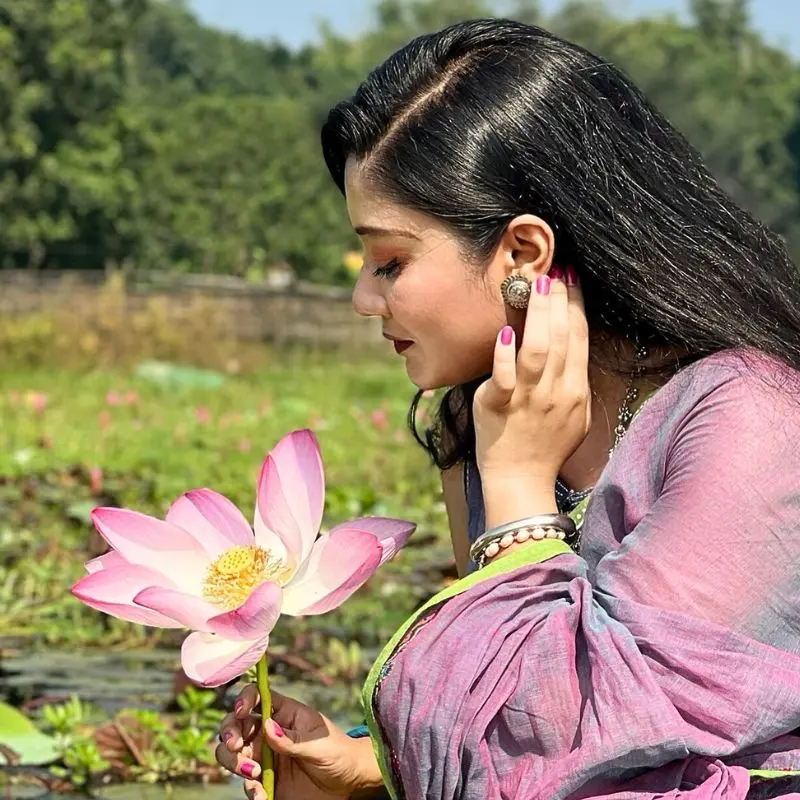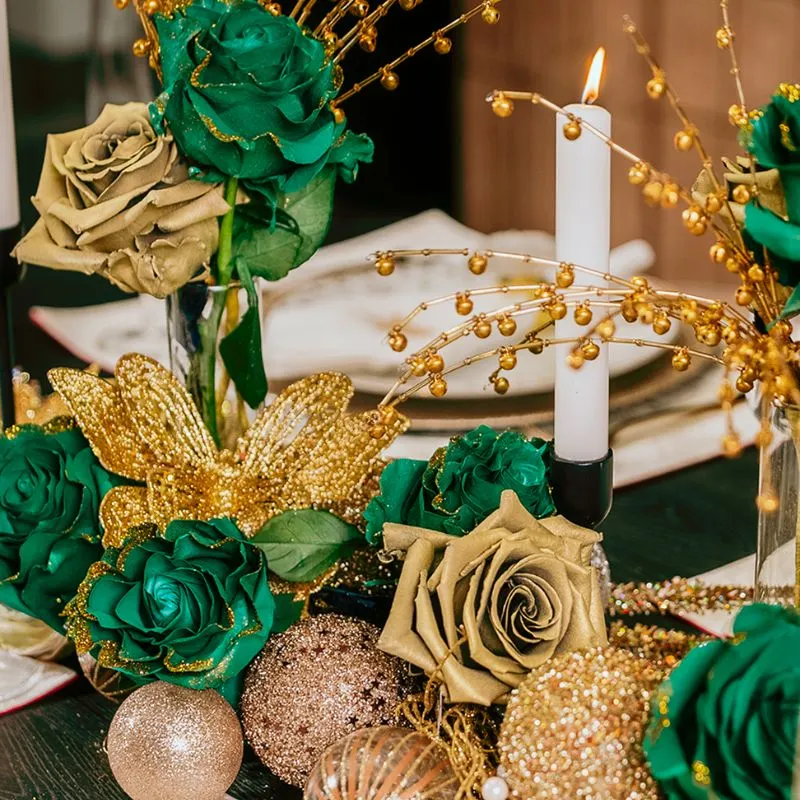The Sri Guru Granth Sahib (SGGS), often referred to as Adi Granth or the Sikh Holy Scripture is a revered compilation of sacred hymns and writings by the Sikh Gurus and spiritual leaders. It is the central religious scripture of Sikhism and the sacred text not only serves as a spiritual guide for Sikhs but also encapsulates the teachings and compositions of the Sikh Gurus and other spiritual figures.
This Holy Scripture is held to be a repository of naturalists' understanding as well as a vast knowledge of the flora of this world. Within the Sri Guru Granth Sahib, there are numerous references to plants and flowers, each carrying profound symbolism and meaning. These symbolisms act as a guide to the practitioners of the faith, on how to live sacred lifestyles, as well as their role in Sikh ceremonial activities.
Origins and Chronology of the Sri Guru Granth Sahib
A central religious scripture of Sikhism, revered by millions of Sikhs worldwide, the Sri Guru Granth Sahib was compiled by the Sikh Gurus, starting with Guru Nanak Dev Ji, the founder of Sikhism, and concluding with Guru Gobind Singh Ji, the tenth and final Guru.
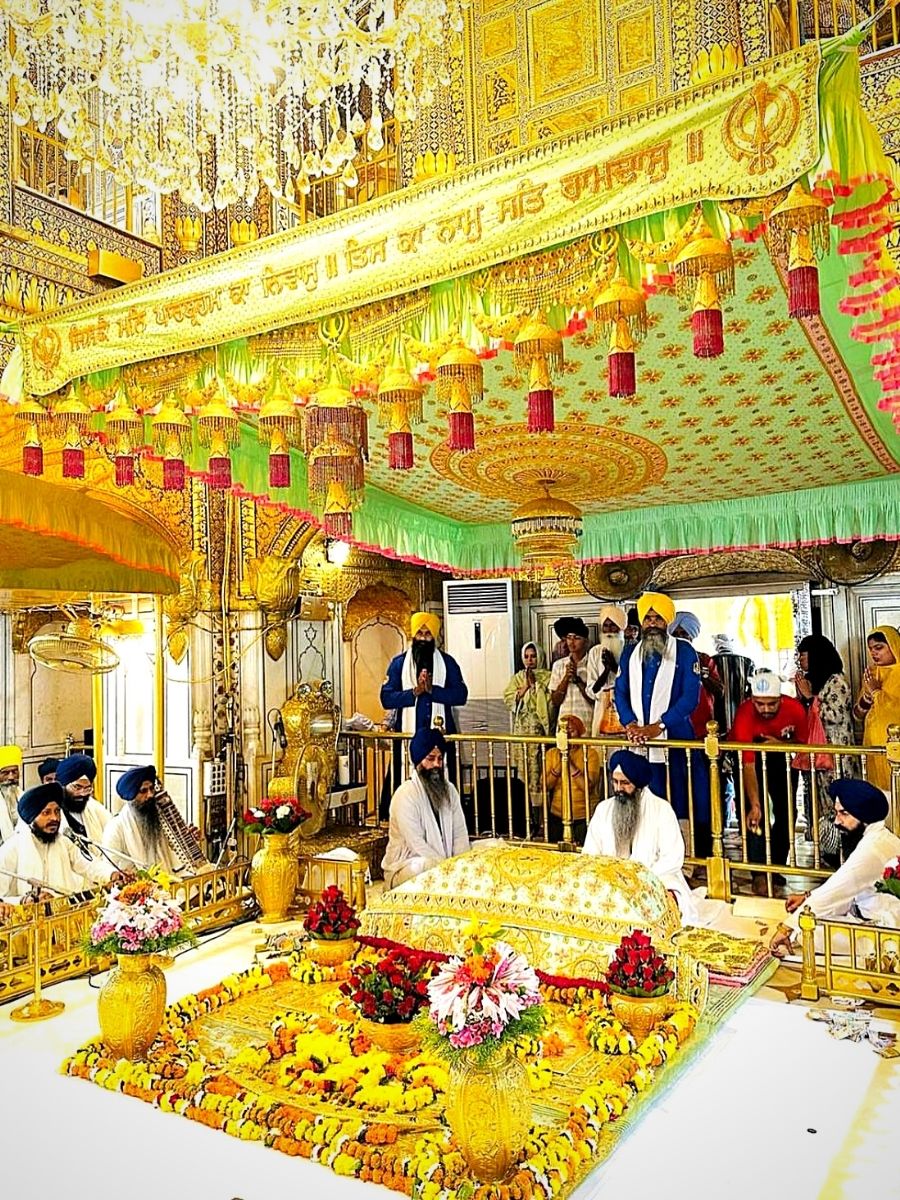
The compilation process spanned over a period of about 240 years, from 1469 to 1708. The Gurus composed their own spiritual hymns, known as Gurbani, which were later compiled to form the Guru Granth Sahib. After Guru Gobind Singh Ji, the scripture was declared the eternal Guru of the Sikhs.
Essentially, it is not merely a compilation of spiritual writings but a living manifestation of the Gurus' divine wisdom and guidance. The compilation of the Sri Guru Granth Sahib was finalized by Guru Arjan Dev Ji, the fifth Sikh Guru. He collected and arranged the hymns, including those of earlier Gurus, saints, and spiritual leaders from various backgrounds.
It contains the words spoken by the Gurus, which are referred to as Gurbani, meaning ‘from the Guru’s mouth’. These are believed to be the word of God and therefore unfailing. The scripture is written in Gurmukhi which is the script the Punjabi language is written in.
The scripture is placed in the prayer hall within the gurdwara. Any building that has a copy of the Guru Granth Sahib is considered a gurdwara.
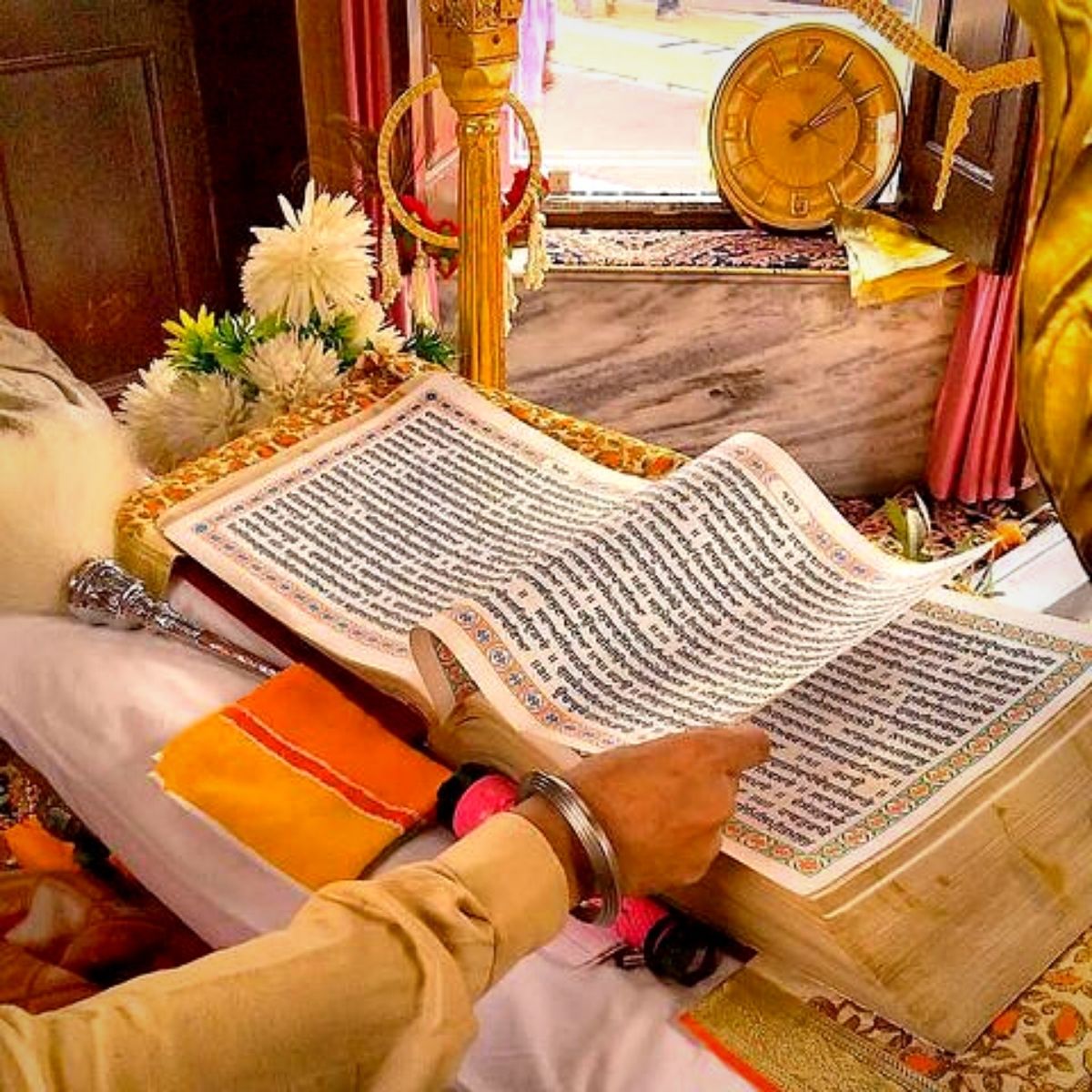
Flowers in the Sri Guru Granth Sahib
This sacred scripture has incorporated botanical jewels in the form of plants, trees, fruits, flowers, herbs, and shrubs to a great extent, with ecological acclimatization being a recurring theme in this religious scripture. Because human life without plant life is virtually unimaginable.
Worth noting is that both Hinduism and Sikhism have some similarities and hence they both give near-similar importance to most plants and flowers. But while Hinduism has pre-historic origins, Sikhism developed much later on.
Notable flowers mentioned in the Sikh scriptures and which are essential in the faith’s ceremonial activities include
The Lotus (Kamal)
This flower is often mentioned in the Sri Guru Granth Sahib and symbolizes purity, detachment, and spiritual awakening. Lotus is a common name for any water lily of the genus Nelumbo and several tropical species belonging to the genus Nymphaea.
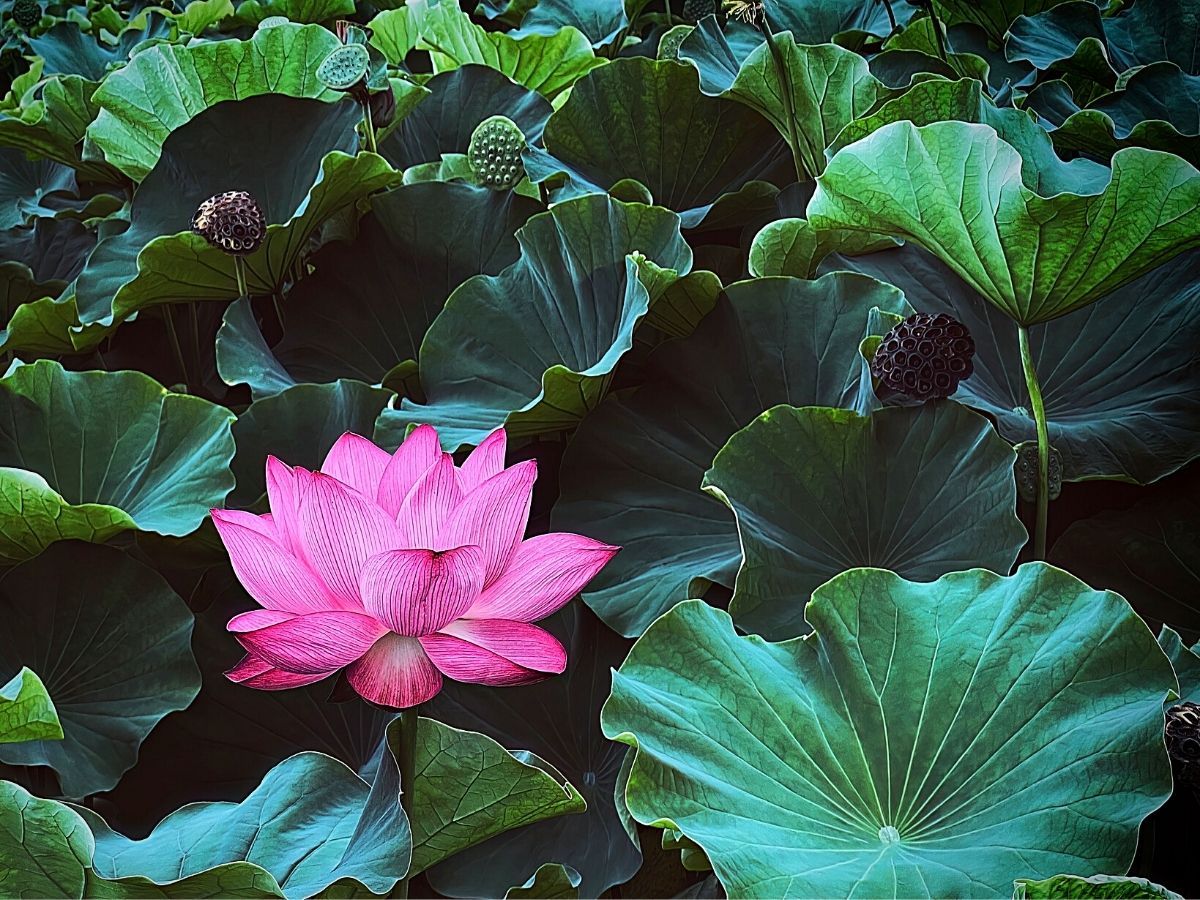
The lotus flower holds significant symbolism in the Guru Granth Sahib. It is considered a metaphor for the spiritual journey and symbolizes purity, enlightenment, and divine grace. The flower is often used to describe the state of a devotee's mind when immersed in meditation and devotion.
It signifies the state of the soul when it attains spiritual enlightenment and connects with the Divine. The flowers are commonly used in Sikh religious ceremonies, symbolizing the purity of devotion.
Rose (Gulab)
Roses represent love and devotion in different contexts across the world. Within the Sri Guru Granath Sahib, roses also signify the Divine's eternal compassion. Roses embody the idea of selfless love and devotion towards the Divine.
In the Guru Granth Sahib, roses symbolize the love and devotion that one should have for the Divine. Its fragrance of devotion speaks to the beauty of spirituality.
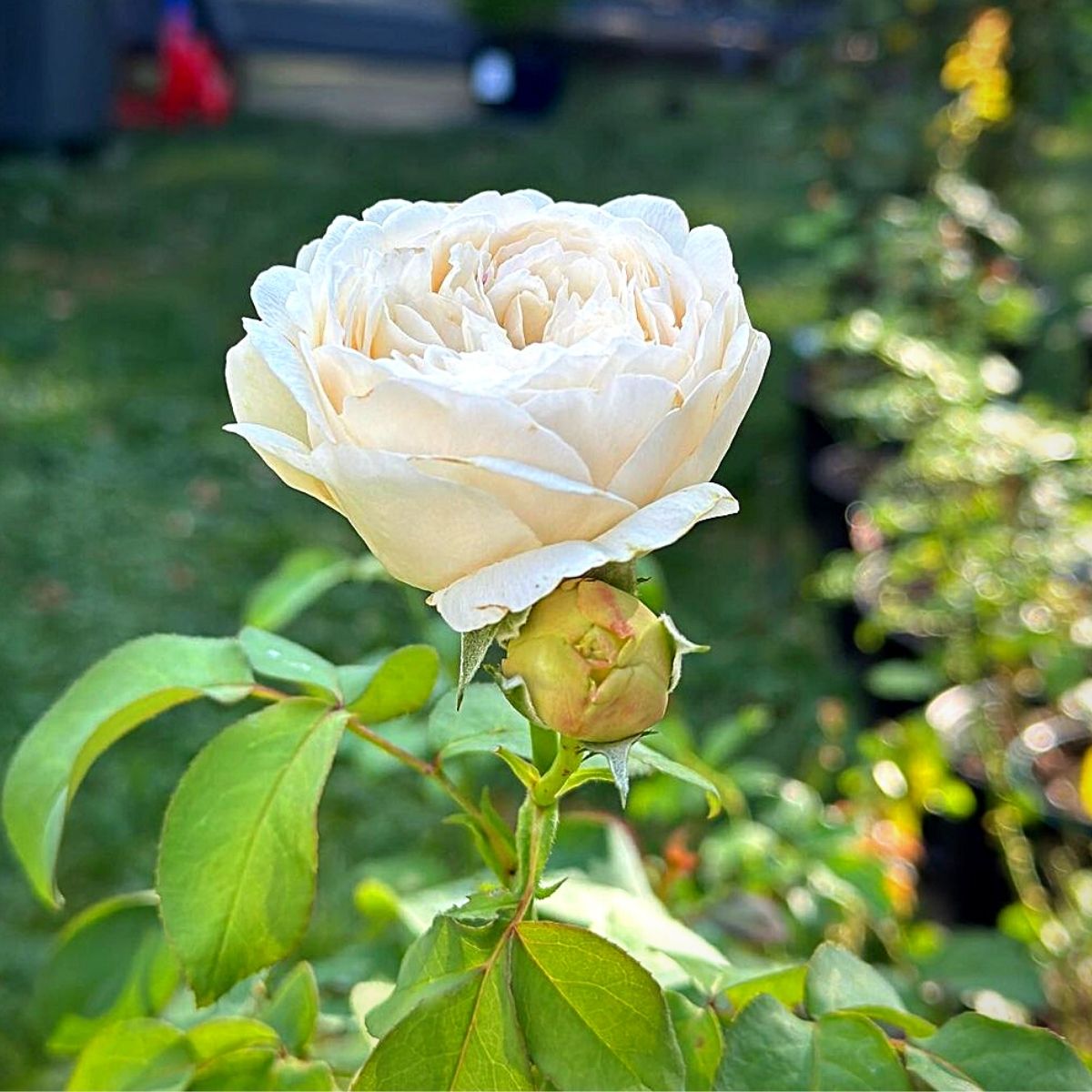
The Sri Guru Granth Sahib often uses the rose as a metaphor for the love and union between the devotee and the Divine.
In ceremonies, roses are used in the decoration of Gurdwaras (Sikh temples) and during religious rituals to symbolize the love and devotion that Sikhs have for their Guru and the Divine.
Jasmine (Mallika)
Also called Mogra, Motia, Chameli, Malli puvvu, Jaati, Mulla, Mallige, Juhi, Mogra, or moonlight in the grove, jasmine represents humility, simplicity, and the fragrance of selfless service. This delicate beauty of a flower reminds individuals to remain humble and serve others with pure love and devotion.
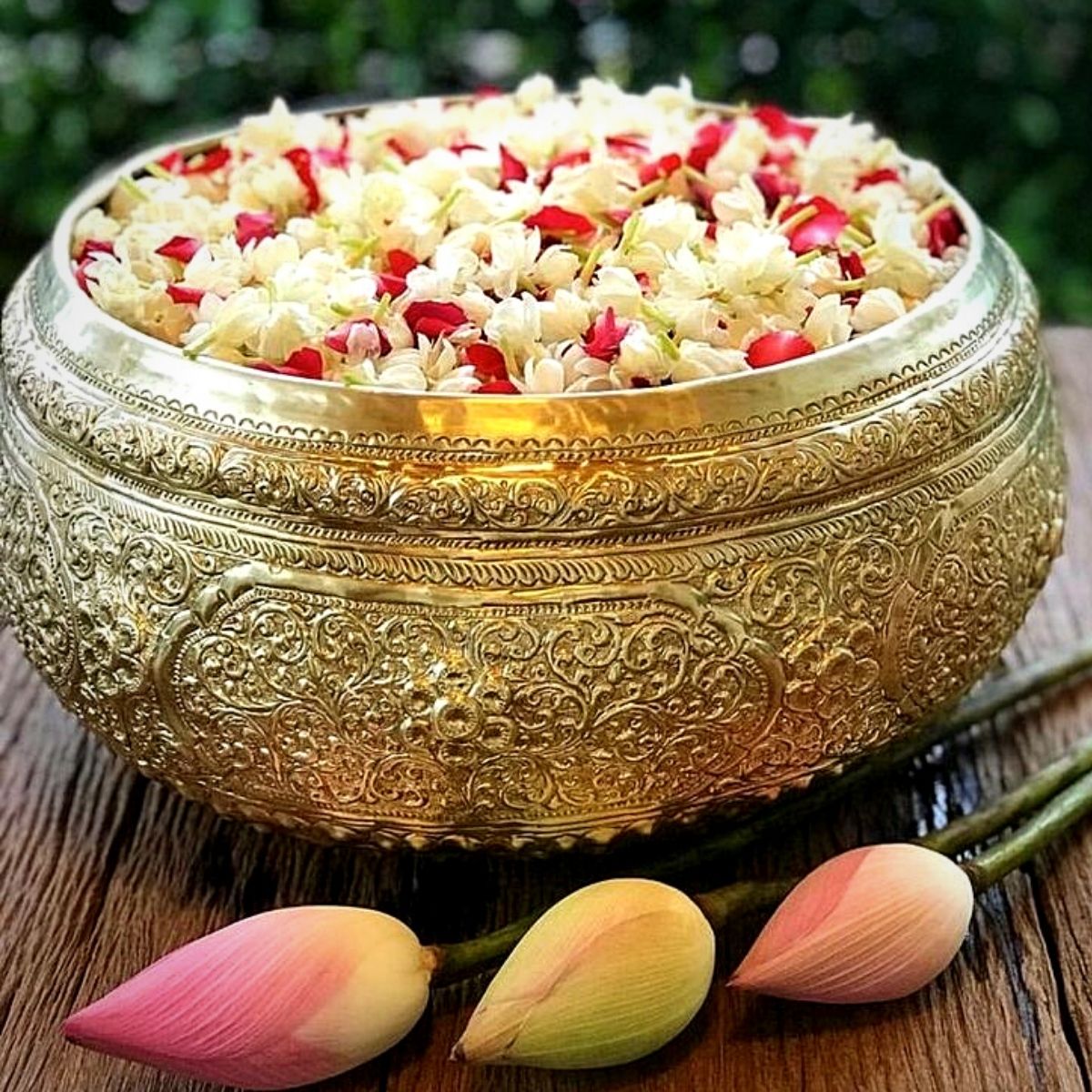
The jasmine flower is associated with the divine presence and is also used to depict the divine qualities of purity and transcendence as well as the humility and selflessness required on the path to spiritual enlightenment.
Jasmine flowers are often used in Sikh weddings to symbolize the bride and groom's commitment to serving each other and the community.
Marigold (Genda)
Marigold is a vibrant flower often used in ceremonial activities. It represents auspiciousness, prosperity, and divine blessings. The marigold's bright and cheerful nature is seen as a reflection of the divine light that guides and protects devotees. They also represent the festive spirit that permeates Sikh life.
The Sri Guru Granth Sahib cites marigolds as a symbol of the satisfaction of connecting with the Divine and celebrating life's blessings.
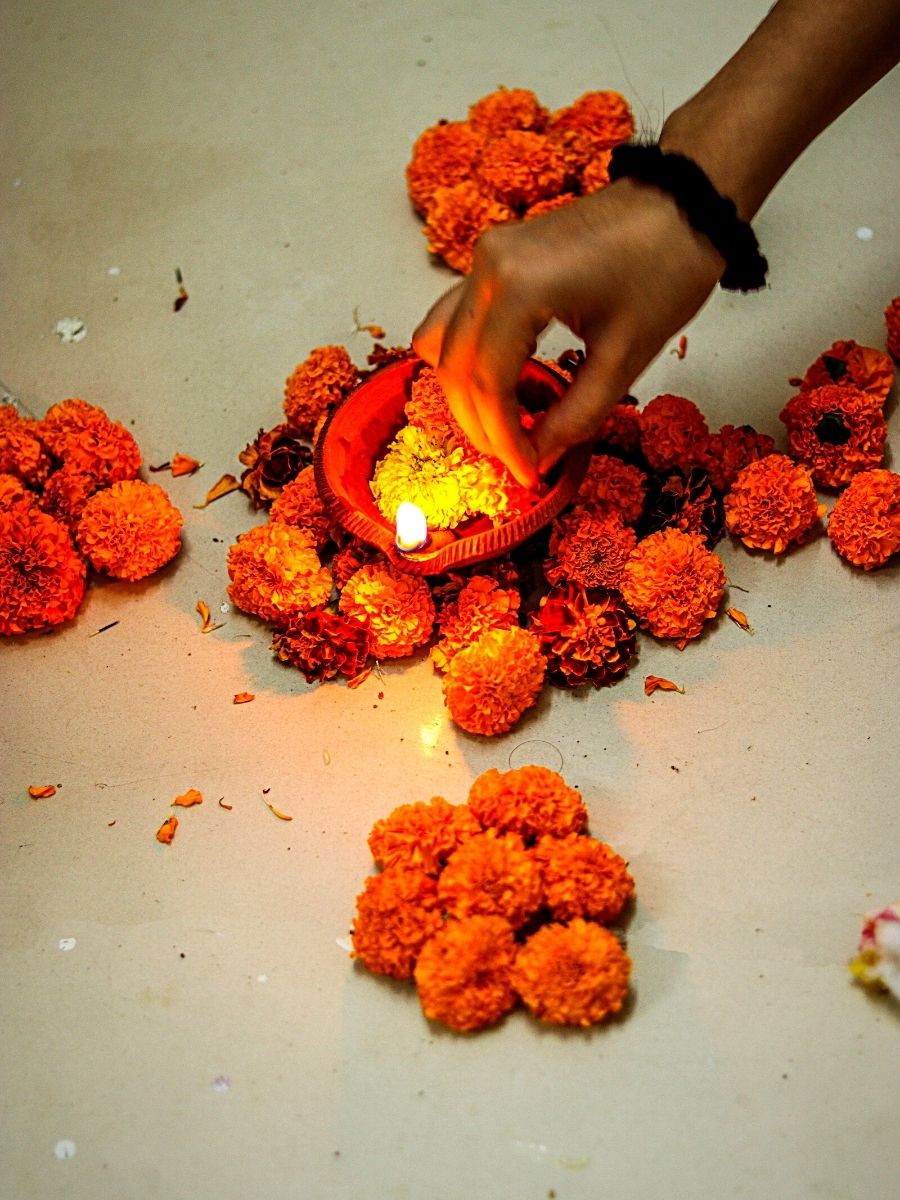
Marigold garlands are commonly used in Sikh religious and cultural celebrations, including Gurpurabs (Sikh festivals) and weddings. It is also used in Sikh ceremonies as a metaphor for the radiance and warmth of spiritual awakening.
Tulsi (Holy basil)
The Tulsi plant is associated with invocation and spiritual healing. Its leaves are often used in Sikh ceremonies, emphasizing the importance of reverence and purity in spiritual practice.
While Tulsi is oftentimes considered a sacred plant in Hinduism, it also has a connection to Sikhism. Shiv Dayal Singh, the founder of Radha Soami, a spiritual tradition that emerged from Sikhism, was influenced by the teachings of Tulsi Sahib, a spiritual guru from Hathras.
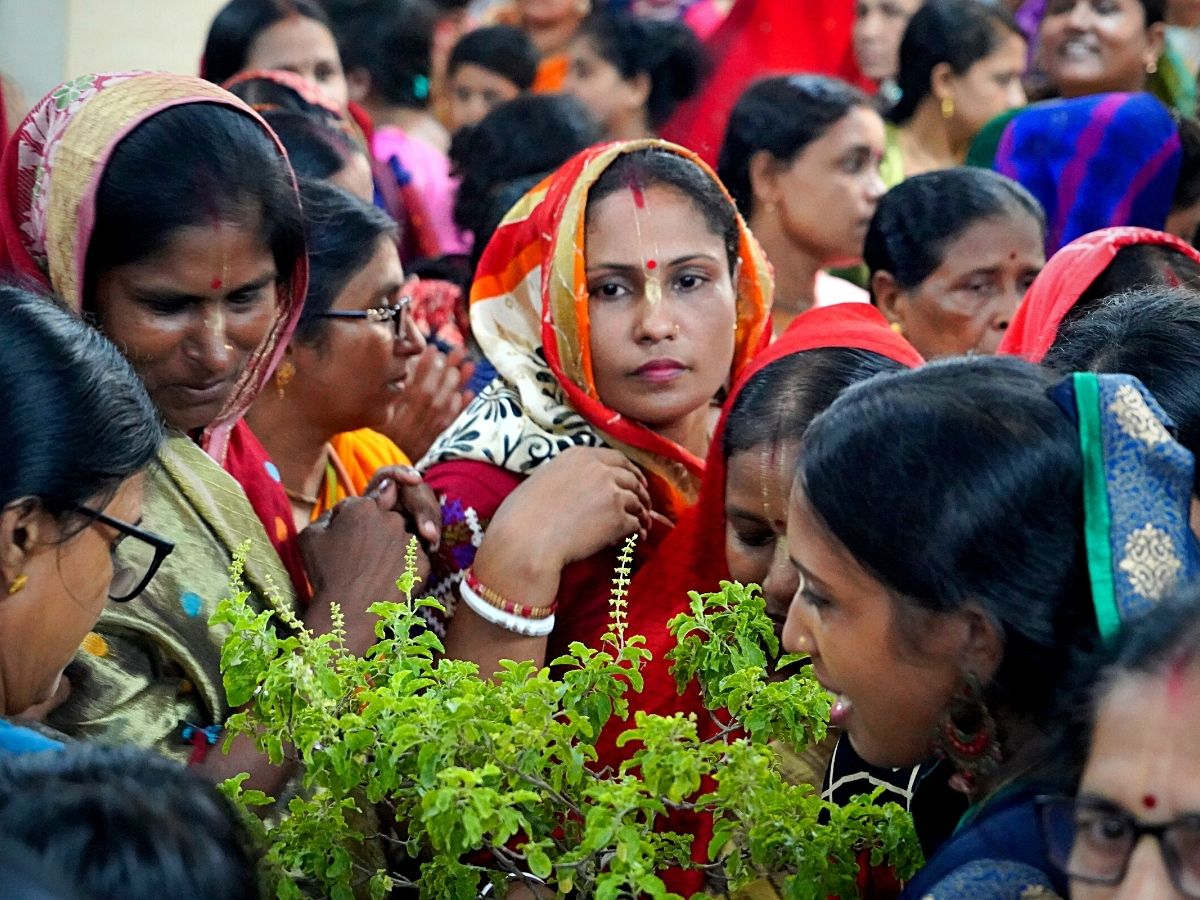
The Tulsi plant is believed to be the gateway to heaven or Vaikuntha, which is the dwelling place of Lord Vishnu in Gorakhnath Sikhism and helps devotees in getting closer to their ultimate goal, Moksha which is liberation from the vicious cycles of birth, death, and rebirth.
Banyan Tree (Bargad)
The banyan tree, with its sprawling branches and deep-rooted stability, is mentioned in the Sikh scriptures as a metaphor for spiritual enlightenment. It represents the interconnectedness of all beings and the immensity of divine wisdom.
In Sikhism, the banyan tree is considered a symbol of detachment from worldly desires and attachment to God. Guru Nanak Dev Ji, the founder of Sikhism, once meditated under a banyan tree in Sultanpur Lodhi, where he received enlightenment.
The tree has the ability to survive and grow for centuries and has been believed to be the embodiment of eternal power.
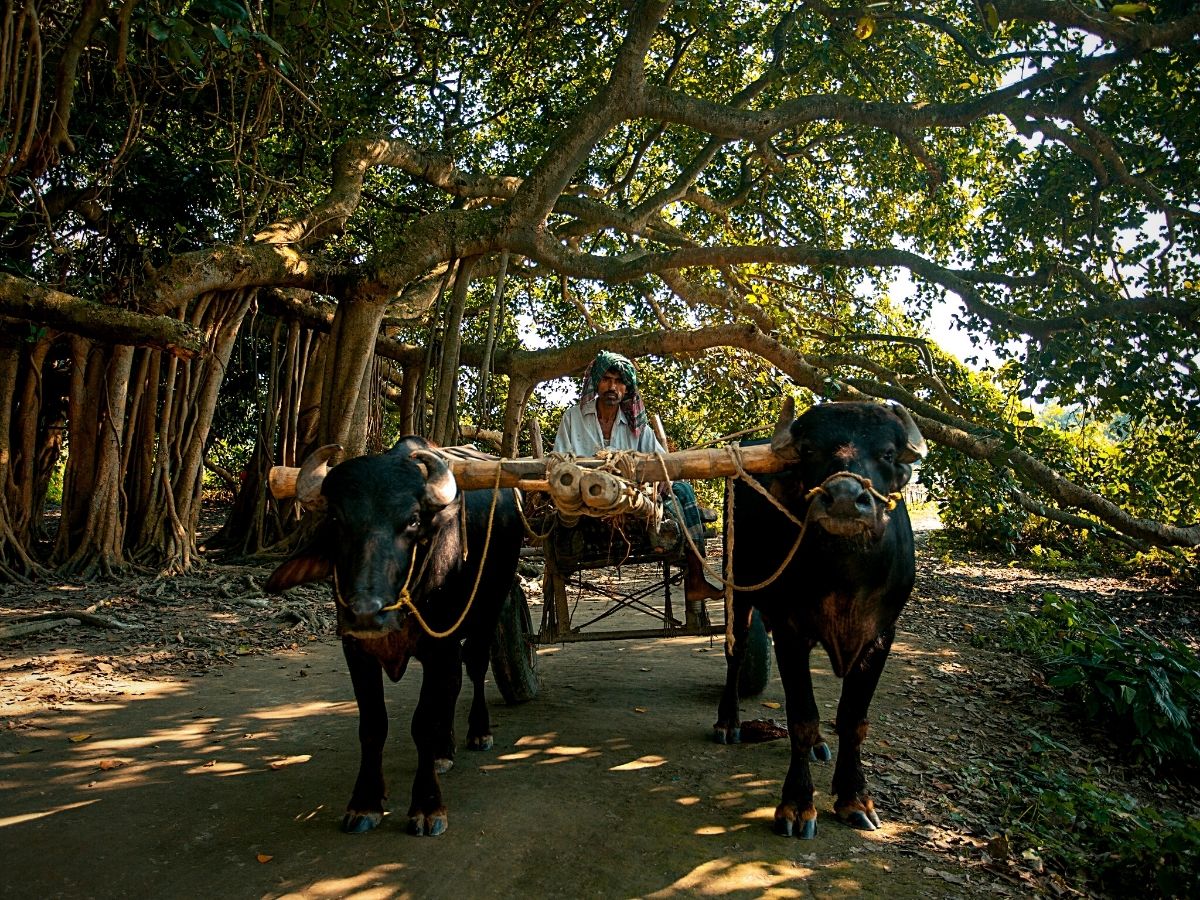
Neem (Margosa)
Neem, renowned for its medicinal properties, is one of the five trees that are sacred to the Sikhs, along with Ber, Pipal, Gular, and Tahli. These trees are known as the Panj Buti, or the five bodies because they represent the five elements: earth, water, fire, air, and ether.
The Panj Buti are also linked to the five Ks, the physical symbols of faith worn by Sikhs who have been initiated into the Khalsa. The Neem tree corresponds to the Kara, or the steel bracelet, which symbolizes restraint, gentility, God’s eternity, and the bond with the Guru.
One of the most important events in Sikh history that involved neem was the creation of the Khalsa by Guru Gobind Singh. On the day of Vaisakhi, a festival that marks the harvest season and the solar new year, Guru Gobind Singh gathered thousands of Sikhs at Anandpur Sahib and asked for five volunteers who were willing to sacrifice their lives for their faith.

He later called them the Panj Pyare, or the five beloved ones, and gave them Amrit (nectar) from a steel bowl under a neem tree. He then asked them to initiate him into the Khalsa as well, making them his equals. The site where Guru Gobind Singh performed this ceremony still stands at Anandpur Sahib and is revered by Sikhs. The Khalsa neem tree standing there is often decorated with flags and flowers during Vaisakhi celebrations.
Peepal Tree (Pipal)
The Peepal tree, also called Ficus religiosa, is a type of fig tree that is mentioned in a story about Guru Gobind Singh, the tenth Sikh guru. The story alludes to the growth of the Peepal tree as an indication of the rise and spread of the Khalsa, which is the Sikh community.
The peepal tree is often referred to as the Bodhi tree and also holds great significance in Sikhism. It symbolizes wisdom, enlightenment, and the eternal nature of the soul. Sikh devotees often seek spiritual solace and enlightenment under its shade.
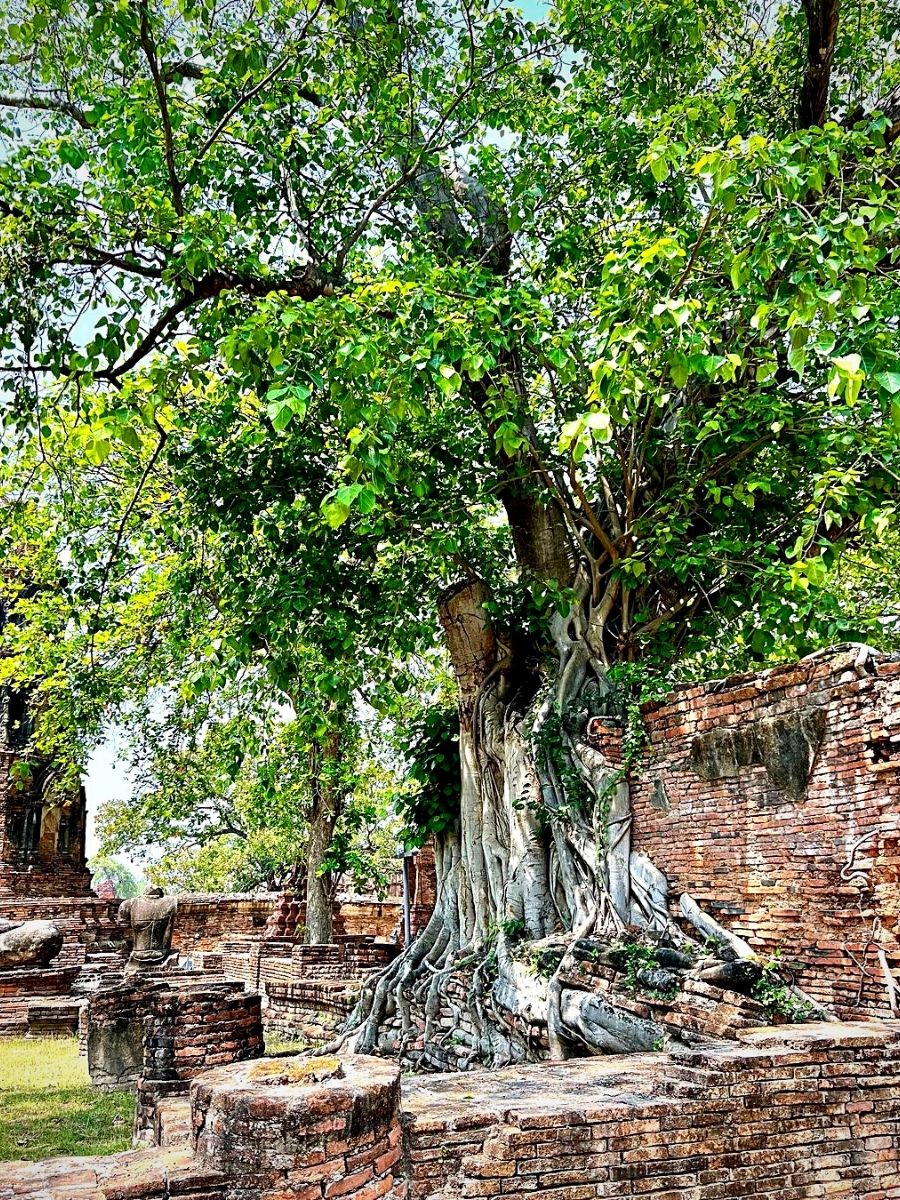
Sandalwood (Chandan)
Sandalwood is known for its aromatic properties and is used in Sikh rituals to create a fragrant atmosphere. So special is the plant that it has been used many times in the Sri Guru Granth Sahib.
Chandan is considered the epitome of excellence and imparts its fragrance even to the axe that cuts it. For this reason, anything that is excellent is referred to as chandana.
Sandalwood is used in sacred ceremonies and to purify holy places. Its presence signifies tranquility, purification, and the awakening of the senses to the Divine presence.
Pomegranate (Anar)
With its numerous seeds, the pomegranate symbolizes fertility, abundance, and prosperity. It signifies the divine blessings that shower upon the devotees, nurturing their spiritual growth. In different contexts in the Sri Guru Granth Sahib, it is often associated with plenitude and prosperity with the numerous seeds being metaphors for fertility, wealth, and bestowals. It is also held to be symbolic of spiritual transformation and inner growth.
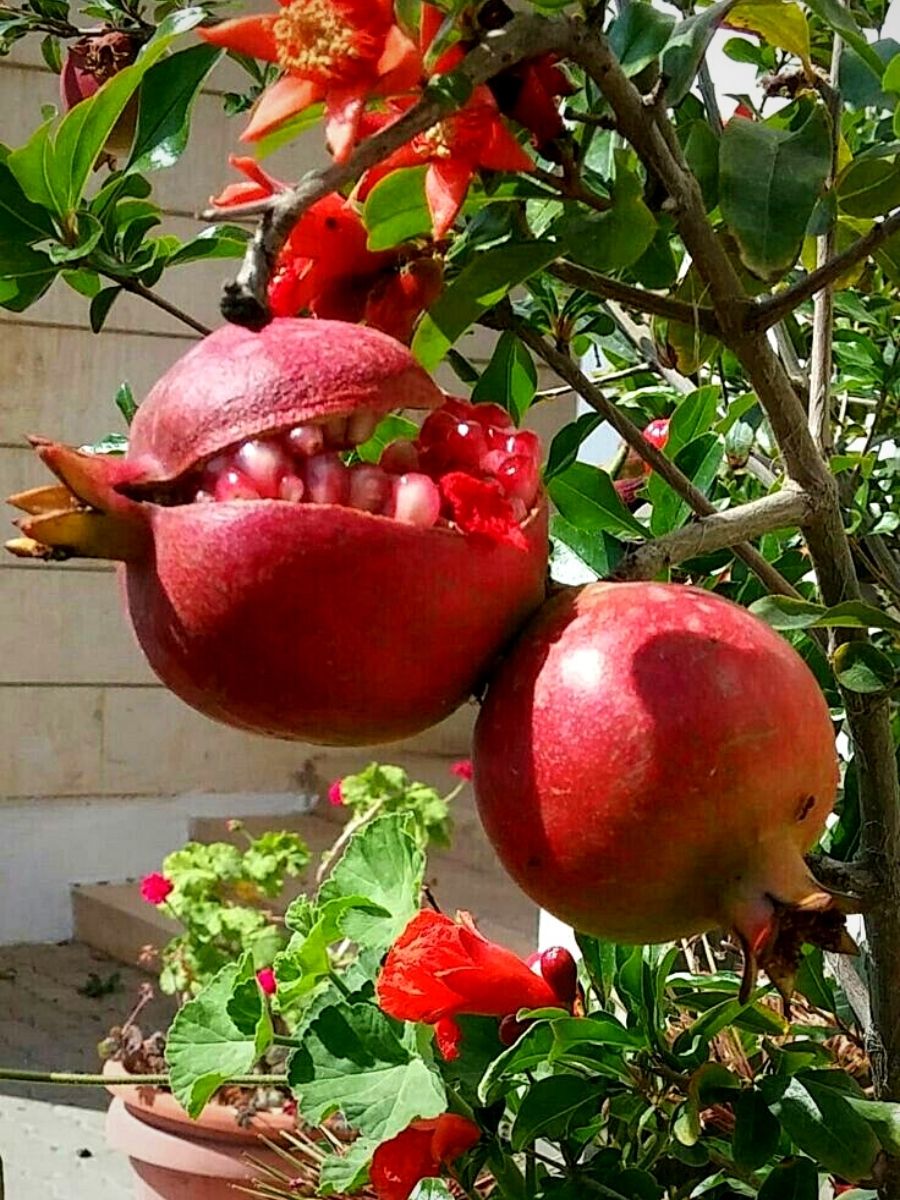
In Sikh rituals and ceremonies, the pomegranate may be used as a decorative element or offered as a sacred offering. The presence of the pomegranate in such rituals reinforces the spiritual aspirations of the devotees and their deep desire to be connected with the Divine.
With these illustrations, it is clear that indeed flowers have long held a significant role in human existence and continue to do so today.
Header image by Lara Jameson on Pexels. Feature image by @Dalipsingh on Pinterest.

